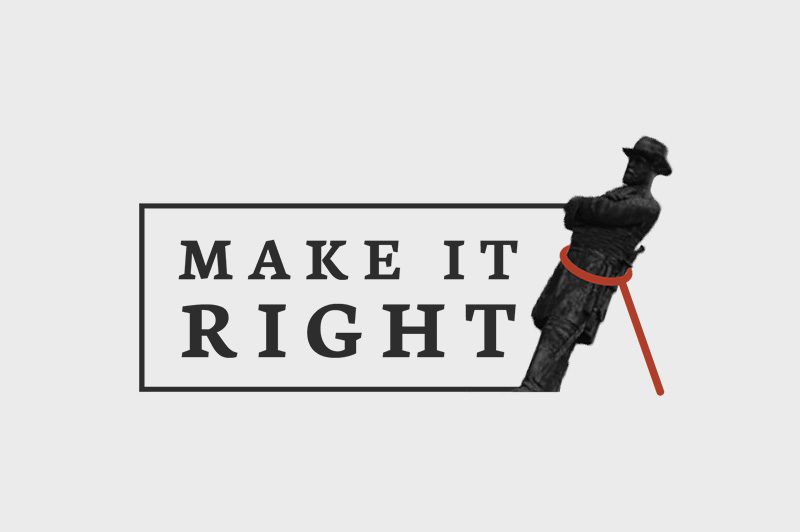The following is an excerpt of an interview that was originally published on H-Net: Humanities & Social Sciences Online. Click to read the full interview online.
Confederate Symbols in Monument and Memory is an H-Slavery discussion series on monuments and memorials commemorating the Confederacy and historical memory. It follows ongoing contests over the placement of monuments to the Confederacy and other forms of commemoration on public grounds and examines debates over their purpose and implications.
This post features an interview conducted by H-Slavery editor Alex Tabor (Carnegie Mellon University) with Kali Holloway, Senior Director of the Make It Right Project—an Independent Media Institute initiative to “do more than just ‘raise awareness’ or ‘start a national conversation’” about Confederate monuments and statues that instead “aims to genuinely move the needle, creating measurable, visible change.” Ms. Holloway is currently a Senior Writer at the Independent Media Institute and the co-curator of the Theater of the Resist at the Metropolitan Museum of Art; she has contributed to several HBO and PBS documentary films and her writing has appeared in the Guardian, TIME, and The Huffington Post, among several other outlets.
H-Net’s interview with Kali Holloway can be accessed here. Visit here to learn more about Kali Holloway and the work of the Independent Media Institute or Make It Right Project.
How does the Make It Right Project relate to other initiatives hosted by the Independent Media Institute (IMI)?
Great question. At the time of the Independent Media Institute’s founding in 1987, there was a clear and pressing need for greater public access to, and elevation of, progressive journalism that covered news often overlooked by mainstream outlets, and which engaged perspectives ignored by the corporate press. In the decades since, that need has grown exponentially. We’re at a point of staggering hyper-partisanship and disinformation in conservative media, and ever-increasing corporatism within mainstream media overall, both factors that have had devastating consequences on the political, social and cultural shape of this country. IMI’s approach to addressing those issues is essentially holistic. We serve as a platform—a clearinghouse of sorts—for independent journalism dedicated to addressing systemic issues across the board via projects/verticals dedicated to topics from voting rights, to education, to the economy, to climate/environment. The Make It Right Project’s journalistic output is part of IMI’s larger effort to produce crucial media that then appears in over a dozen major progressive and independent outlets in the U.S. IMI’s collective journalistic output shows how none of these issues are siloed—and IMI’s coverage of those topics illuminates their interrelatedness. We think of IMI’s work, which touches on so many areas, as offering a broad vision look at the critical issues we’re facing on every front and where they intersect, with incisive ideas on how to address them and create substantive social change.
How does the Make It Right Project differ from other initiatives that seek to draw attention to Confederate monuments and inform different audiences about their history and meaning?
We frequently work in collaboration and coalition with other groups around the country that are either singularly dedicated to removing Confederate markers—and we also partner with organizations whose mission stretches beyond, but also includes, the removal of Confederate memorials. The latter includes local chapters of groups like Black Lives Matter, NAACP, DSA, the Women’s March and SURJ; the former describes partners such as local divisions of Take Em Down, Chapel Hill’s Move Silent Sam, and De-Confederate Austin. One slight difference between us and some of our collaborators is that, while we endorse every good-faith effort to take down tributes to the Confederacy—in whatever form those tributes take, including roads, schools, building and city names—Make It Right is focused specifically on the removal of monuments and statues. We also place an emphasis on journalism and media as a means of public outreach and engagement, a focus informed both by the fact that I come to this work as a journalist and IMI’s background is in independent media. That said, we are always more than happy to bolster the work of like-minded groups with differing targets.
[…]
The above is an excerpt of an interview that was originally published on H-Net: Humanities & Social Sciences Online. Click to read the full interview online.

